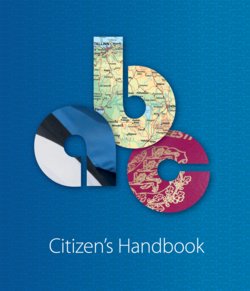Читать книгу Citizen’s Handbook - Mart Jagomägi - Страница 11
На сайте Литреса книга снята с продажи.
GOVERNMENT OF THE REPUBLIC
ОглавлениеExecutive authority is vested in the Government of the Republic. The Government of the Republic administers the implementation of laws (e.g. tax collection, maintenance of law and order, etc.) and can issue legislation (regulations and directives) on the basis of and for the implementation of laws. This means that the Government of the Republic is allowed to issue a regulation or directive only if this is clearly provided for by legislation.
Formation of the Government of the Republic
The President of the Republic presents a Prime Minister candidate to the Riigikogu. In order to select the candidate, the President consults with the political parties represented in the Riigikogu to determine the candidate supported by the majority of the members of the Riigikogu. The Riigikogu decides whether to authorise the Prime Minister candidate to form the Government. The Prime Minister candidate who has been authorised by the Riigikogu to form the new Government presents, within seven days, a list of its members to the President, who appoints the Government to office within three days.
The Government of the Republic assumes office by taking the oath of office before the Riigikogu.
The Government of the Republic resigns upon:
• the first meeting of the new Riigikogu
• the resignation or death of the Prime Minister
• the expression of no confidence in the Government of the Republic or the Prime Minister by the Riigikogu
The President releases the Government of the Republic from office at the time of assumption of office by the new Government.
The Government of the Republic rests on the trust of the Riigikogu. The Riigikogu may express no confidence in the Government of the Republic, the Prime Minister or a minister. If the Riigikogu expresses no confidence in the Prime Minister or the Government, the entire Government needs to resign. In order for an expression of no confidence to pass, at least 51 members of the Riigikogu must vote in favour.
Composition of the Government of the Republic
The Government of the Republic comprises the Prime Minister and ministers. The Prime Minister represents and presides over the Government of the Republic. The Prime Minister appoints two ministers who have the right to substitute for the Prime Minister during his or her absence. The procedure for substitution is established by the Prime Minister. Only another minister can substitute for a minister.
A ministry is run by a minister. The President may, on a proposal of the Prime Minister, appoint up to two so-called ministers without portfolio (i.e. without a ministry). An exception is the Ministry of the Interior, which is run by the Minister of the Interior, but the structural units of the Ministry of the Interior involved in local government, regional administration, regional development, marital status matters, and arrangement of issues related to churches and congregations are run by the Minister of Regional Affairs. Therefore, the Ministry of Regional Affairs also has the rights and duties of a minister running a ministry.
A minister presides over his or her ministry, disposes of matters within his or her sphere of government, issues regulations and administrative decrees on the basis of and for the implementation of laws, and performs other duties assigned to him or her on the basis of and pursuant to a procedure provided by law.
Members of the Government of the Republic may not hold any other governmental office, or belong to the management board or supervisory board of a commercial enterprise.
For information on the members of the Government and their activity, follow the link www.valitsus.ee.
The ministries of the Republic of Estonia are as follows:
• Ministry of Education and Research
• Ministry of Justice
• Ministry of Defence
• Ministry of the Environment
• Ministry of Culture
• Ministry of Economic Affairs and Communications
• Ministry of Agriculture
• Ministry of Finance
• Ministry of the Interior the Interior
• Ministry of Social Affairs
• Ministry of Foreign Affairs
Governmental authorities
Governmental authorities include ministries, the Government Office and county governments, agencies and inspections and their local offices of executive power. The Defence Forces and the prosecutor’s office are also governmental authorities.
At the county level, the Government is represented by the county governor. The governor also verifies the legality of legislation of specific application passed by local government units and of certain administrative operations.
Government Office and Secretary of State
The Government of the Republic is assisted by the Government Office, which is led by the Secretary of State. The Secretary of State organises the work of the Government of the Republic and leads the Government Office.
The Secretary of State is appointed and released by the Prime Minister.
Working procedure of the Government of the Republic
Unlike sittings of the Riigikogu, meetings of the Government of the Republic are held in camera (unless the Government decides otherwise). Decisions of the Government are made at the meetings. The Government of the Republic makes its decisions based on proposals from the Prime Minister or from a competent minister. Government Regulations and Directives are also adopted at the meetings. The meetings of the Government of the Republic are chaired by the Prime Minister. Decisions are taken collectively and the Prime Minister does not have the right to decide in the name of the Government (as in some other countries).
Regulations of the Government are valid if they bear the signature of the Prime Minister, the competent minister and the Secretary of State. Regulations of the Government and ministers are also available in the electronic Riigi Teataja at www.riigiteataja.ee.
